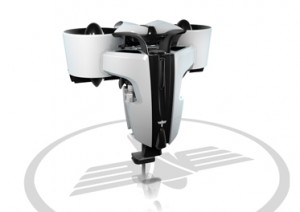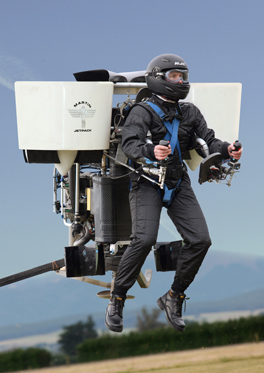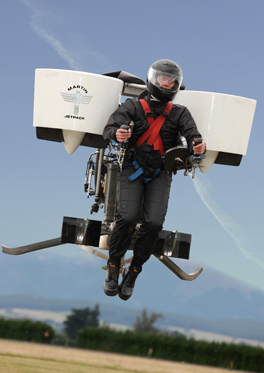When ever I hear or see Ramayana, I feel amazed by the ability of Lord Hanuman to cross the sea, and deep within i fantasized about such power. I am sure that, i am not the only one to have such a fantasy. Since the beginning of time man has dreamed of flying as free as a bird. Today, that dream is a reality. The Martin Jetpack is the world’s first practical jetpack.
Other than epics, you might have seen such a device in scientific fiction movies. These machines/devices that lets you fly and we are not talking about airplanes and helicopters either, something that is more personal, intimate and thrilling.

The jetpack has been a major goal of the aerospace industry for over fifty years – a goal that has been achieved by Martin Aircraft Company. The Martin Jetpack is a result of years of input from a team of engineers and developers worldwide.
It was developed by the Martin Aircraft Company of New Zealand, and was unveiled on July 29, 2008 at the Experimental Aircraft Association’s 2008 AirVenture in Oshkosh, Wisconsin, USA. It is classified by the Federal Aviation Administration as an experimental ultralight airplane.
Unlike earlier devices called “jetpacks”, the Martin Jetpack is the first to be considered a practical device. It has been under development for over 27 years and uses a gasoline (premium) engine with two ducted fans to provide lift. Theoretically it can reach a speed of 60 miles per hour, an altitude of 8,000 feet, and fly for about 30 minutes on a full fuel tank. The consumer price is expected to be $100,000.
The Jetpack is a small VTOL device, with two ducted fans that provide lift. It is powered by a 2.0 litre V-4 piston 200-horsepower gasoline (premium) engine. The pilot straps him/herself onto it, and does not sit. It is much too big for him/her to walk about wearing it, so it cannot be classed as a backpack device. It does not have a jet turbine or rocket motor, however the Jet in Jetpack refers to the production of two jets of air from its ducted fans. The Martin Jetpack meets the Federal Aviation Administration’s classification of an ultralight aircraft. It uses the same gasoline used in cars, is relatively easy to fly, and is cheaper to maintain and operate than other ultralight aircraft. Most helicopters require a tail rotor to counteract the rotor torque; this and the articulated head complicate flying, construction and maintenance enormously. The Jetpack is designed to be torque neutral – there is no tail rotor, no collective, no articulating or foot pedals – and this simplifies flying dramatically.
Check the demo video of Flying:
In order to enhance safety, the finished product will feature a ballistic parachute and a fly by wire system whereby the pilot sends instructions to a computer which then interprets them and flies the craft smoothly. It can also be programmed to only fly a few meters above the ground and/or fly within certain limits.


